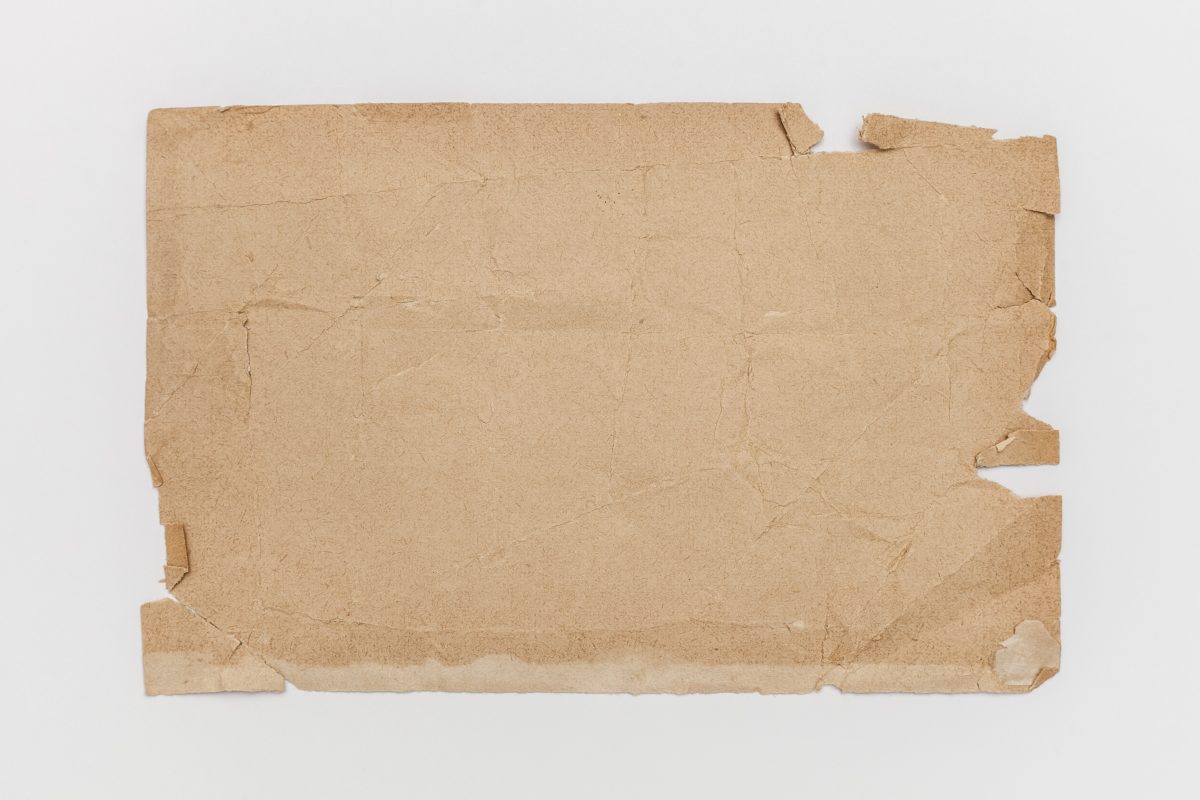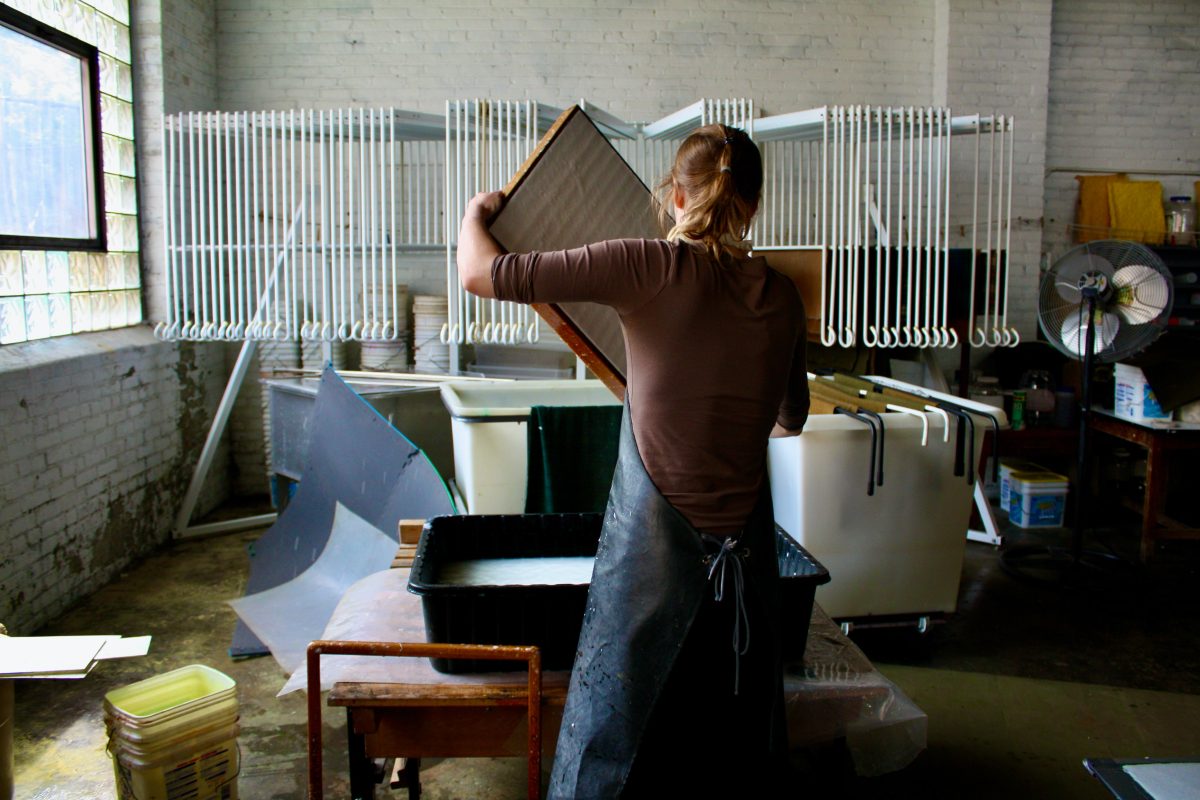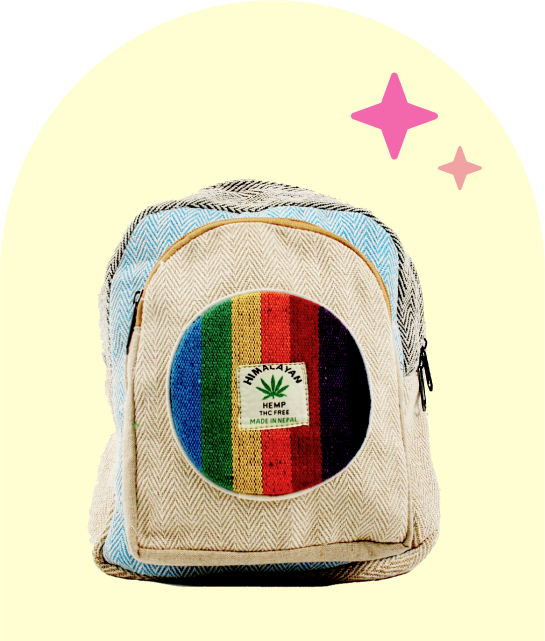Lokta Paper vs Normal Paper
Nepali Lokta paper is an eco-friendly paper handmade from the fibre of Lokta Bush (scientific name Daphne papyracea). The shrub grows at an altitude of 6500 ft or above on the southern slopes of the Himalayas. Lokta paper is fully sustainable and eco-friendly as only the inner bark of the Lokta bush is stripped away. Its root system isn’t damaged. So, the plant regenerates to its original height in 5 to 7 years. Each sheet of Lokta paper is crafted by talented artisans in Nepal. So the cultivation of this tree-free paper is the source of income for many people in rural and underdeveloped regions in Nepal.
Lokta paper is also known as Nepali Kagaj (paper). It has been used in Nepal since the 12th century and was the only kind of paper produced and found in Nepal until the 20th century. It was used for religious purposes to write religious texts, print mantras for prayer wheels, and religious tales. In the late 20th century, however, the market saw a surplus in cheap papers imported from China and India. This was a threat to the local paper-making industry of Nepal and would affect the livelihood of village artisans directly. The government upon recognizing the importance of the paper in Nepali culture and economy mandated the use of Nepali Lokta paper in all handwritten official documents. Even now the tradition of using Nepali paper is kept alive. It is used for all kinds of land ownership papers (lal purja) and other legal documents.

Today, Lokta paper is not used as commercially as before in textbooks, notebooks, newspapers, etc. But Lokta paper still holds cultural and moral significance. It is very popular in making crafts, decorative paper, making dairies, lamp-decors, greeting cards, and other accessories. Lokta paper is also great for bookbinding, origami, block-printing, and reusable gift wrap. It comes in various sizes, textures, and colours.
Read: Nepalese Lokta Paper and its Significance
How is Lokta Paper Made?
- Raw materials
The evergreen bush of Danphe grows wild in the Himalayas. It grows up to a height of 5 ft and has pretty white-pink flowers. These flowers are hermaphrodite (which contains both male and female parts) and are pollinated by bees and flies. They have a similar aroma to that of the Hyacinthe. The paper is made from the bark of this bush, which is harvested by hand. When the bark is stripped, it gives a pleasant smell like the inside of a pea pod. Since only the bark is used, the plant regenerates itself in 5 to 7 years. The plant doesn’t have to die or get chopped down to make Lokta paper.

- Paper Pulp
Then the bark is chopped by hand into smaller pieces. The bark is then soaked in water for about 7 to 8 hours. After that, it is boiled for a couple more hours to soften and break down the fibres. Then, a fine paste is made by beating the paper to pulp. Every single sheet of Lokta paper is handmade by adding the pulp into the wooden mesh/frames.
At this stage of production, leaves and flower petals can be laid onto the pulp in the frame. Seeds can also be added to the mixture for seeded papers. The resulting papers are incredibly pretty, with a luscious texture, and a pleasant aroma.
- Laying down the pulp

The pulp thus made is filled into wooden frames and circulated by hand. The artisans are so skilled and experienced that the pulp distribution across the frame is very accurate. A variety of thicknesses can be achieved, even up to just 5gsm. Once the frames are filled and accessories added (if any), they dried in the Sun until it becomes a solid, durable paper. This process doesn’t take very long for most of the year.
To add stunning patterns and designs, different frames can be used. There is a method called Screen Printing, where every single sheet is hand-printed using water-based paints. Then each sheet is dried again in the Sun.
Alternatively, Lokta paper can also be crafted in different colours using dyes. Almost all colours can be achieved using natural dyes, with no chemical or acid being used at any stage. Such dyes are created from plants and minerals. This method has long been used for centuries in Nepal to make colourful papers.
How is Normal Paper made?
Most normal papers are made from forestry products, usually tress. The most common trees are for paper production are Spruce, Pine, Fir, Larch, Hemlock, Eucalyptus, Aspen, Birch, etc. First, the cellulose fibres are extracted from a variety of sources and converted into pulp. Then the pulp is combined with water and placed on a paper-making machine where it is flattened, dried, and cut into sheets and rolled as desired.
Commercial papers like this are far less sustainable than Lokta papers. The process of manufacturing paper commercially releases nitrogen dioxide, sulfur dioxide, and carbon dioxide. Out of the billions of cubic feet of trees deforested each year, over 60% are used to make paper. This deforestation is responsible for nearly a fifth of the world’s annual greenhouse gas emissions. Although paper is one of the few very sustainable and eco-friendly materials, it still has an impact on our planet.
Lokta paper over normal paper:
Here’s why Lokta papers are better than normal papers:
- Lokta papers are sustainable, as no trees are cut down for their production
- Lokta papers are eco-friendly. No heavy-duty machines and large power is required to manufacture paper
- There is almost no waste in the raw materials from plants.
- They are hand-made by skilled and experienced artisans.
- Each sheet is unique with a human touch instead of a machine laying out and cutting paper.
- They come in different colours. The dyes used are natural and eco-friendly too.
- Lokta paper has unique and stunning textures.
- They are decorative and may contain flower petals, leaves, seeds, etc.
- Because of different natural accessories, Lokta papers give off a pleasant aroma.
- Lokta papers are durable and strong. This is why they are used in hand-printed and official documents.
- Lokta paper cultivation supports villagers and gives them a steady flow of income.
- Lokta papers have a lot of cultural and religious significance.
- They are popular for making diaries, wrapping papers, making origami, writing sacred texts, artworks, paintings, greeting cards, celebratory cards, etc.
- They are also durable as textbooks, notebooks, newspapers, calendars, and maps.
In conclusion, Lokta papers offer all the goodness of normal, commercial papers and add more. They are sustainable, ethical, fully organic, eco-friendly, and a revenue stream for local artisans.
Browse our catalogue for beautiful and durable Lokta papers in different designs, patterns, textures, and colours. By supporting our Lokta papers, you are supporting the Nepali papermakers and promoting our rich culture.





